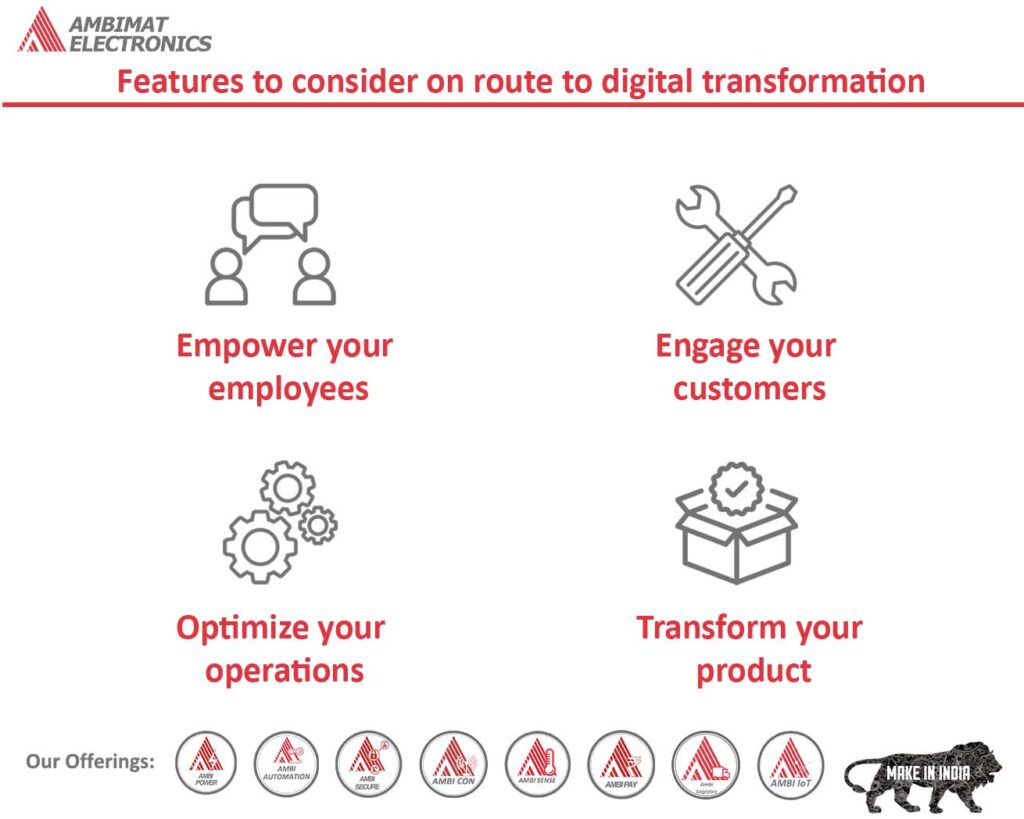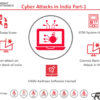Dear Readers,
This week’s blog is about features to consider on the route to digital transformation. Recently, corporate digital transformation strategies to the cloud have accelerated instantaneously and effectively, supporting the new hybrid work environment. While IT groups are focused on making this transition, they need to ensure they properly secure identities during and after the migration to the cloud. With the rise in ransomware attacks, the need for identity security has only increased.
The use of multi-factor authentication is vital, as it ensures that information is only accessed by the intended person, making it harder for cybercriminals to steal. If user data is less
tempting, cyber thieves would go for a different one. Multi-factor authentication is a blend of two separate factors. One is usually the username and password, which is something user knows.
Ambimat Electronics, with its experience of over forty years, desires to draw the attention of its readers and potential customers towards this blog post about their new product called AmbiSecure key and how it will benefit us.
Features to consider on route to digital transformation
Before we begin, we need to define what digital transformation is. Digital transformation is the use of new, fast, and often-changing digital technology to solve problems. A successful digital transformation provides businesses with the ability to quickly innovate and adapt.Recent studies have shown that about 56% of surveyed CEOs agreed that digital transformation has led to increased profits while there is a 64% possibility that companies are likely to accomplish their business goals than their associates.
Due to the shift in companies functioning worldwide during the COVID-19 situation, digital transformation is extremely relevant today. Organizations were required to meet the demands of remote work culture, and therefore, many companies had no other option but to adopt cloud-first strategies in haste, without getting enough time to ponder upon the cost implication, complexity, and security.
Investment strategy development in respect to cost
One of the mistakes that organizations have made is to adopt modern technologies just for the sake of it without even achieving business results. In 2018, a huge amount ($1.3 trillion) was spent on digital transformation, however, about $900 billion was not properly utilized as initiatives didn’t meet their expectation. This amount was about 70% of their total spend. A solid strategy is always required before investing in modern new technologies, especially when headed towards digital transformation, to avoid paying for tool and service which is
unnecessary.
Complexity: take on technology that boosts—not slow down—productivity.
Even with added advantages, digital transformation does have its complexity. Organization need to take on new set-ups, deploy new applications, get new services, and support internal and external customers more than before. Such complexity can be exponential.
Another report showed that about 56% of users will only accept latest technologies that are user friendly and can improve security in respect to account access. Nonetheless, organization should ensure that they consider such strategies that can balance usability with security. Additionally, companies wanting to enjoy the advantages of digital transformation should implement innovate measures like passwordless authentication that offers a streamlined user experience while boosting enterprise security.
Security: deploy strong authentication across systems and services
With the acceptance of new technology and a rapid growth of users and employees relying on this technology, comes a new and sometimes unexpected set of security challenges. With the increase in remote working, unsecured WiFi connectivity and the use of multiple devices and computers have given the opportunity to hackers with new surfaces to exploit.
VPN is not the end of secure remote access. It is imperative that all forms of remote access are protected, mainly RDP/SSH; internet-facing servers and interfaces such as PsExec. It is also vital to observe and scrutinize access beyond the perimeter ―on-premise and cloud, in order to spot and respond to threats.
Security is as good as its weakest link. Passwords are considered a weak link and in order to minimize risk is adding additional layer of security, such as multi-factor authentication and
going passwordless with methods like FIDO-based authentication.
The advantage of enabling strong authentication is that it can quickly and securely verify identities ― a necessary step in digital transformation. A successful digital transformation has a high assurance MFA that delivers security, flexibility, and scale.
Now that we have learned that digital transformation is no longer a buzzword, but a necessity for which organization must consider the 3 factors of cost, complexity and strong authentication. Security is the main criteria for digital transformation. Digitization has several advantages if businesses are properly protected.
Digital transformation with AmbiSecure
FIDO2 is a standard that simplifies and secures user authentication. It uses public-key cryptography to protect from phishing attacks and is the only phishing-proof factor available. Corporations around the world and across many sectors, including healthcare, can benefit from Fast Identity Online or Fast ID Online (FIDO) authentication, which their employees and users can use to minimize security risks, and improve overall user experience. The AmbiSecure key and card is FIDO certified which offers superior security by combining hardware-based authentication and public key cryptography to effectively defend against phishing attacks and eliminate account takeovers.
AmbiSecure helps organizations accelerate to a password-less future by providing FIDO2 protocol support. Not only does FIDO2 supports two-factor authentication, but also paves the way for eliminating weak password authentication, with strong single-factor(passwordless) hardware-based authentication. The AmbiSecure provides a simple and intuitive authentication experience that users find easy to use, ensuring rapid adoption and organizational security. Ambisecure key or card does not require a battery or network connectivity, making authentication always accessible.
References:
https://www.yubico.com/blog/3-factors-to-consider-on-the-path-to-digital-transformation/




